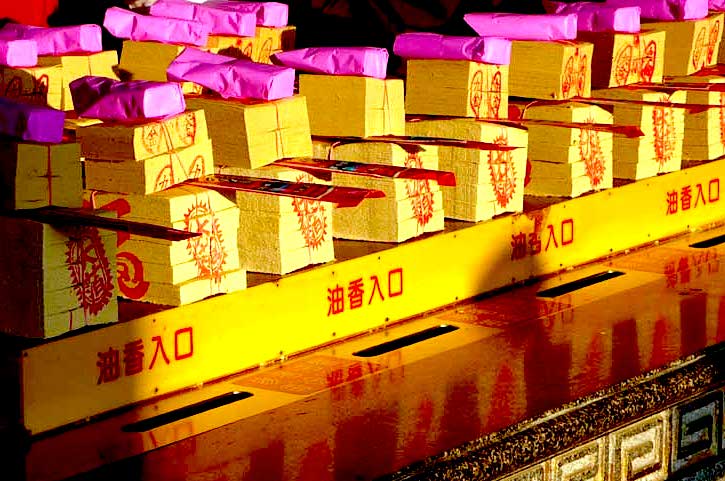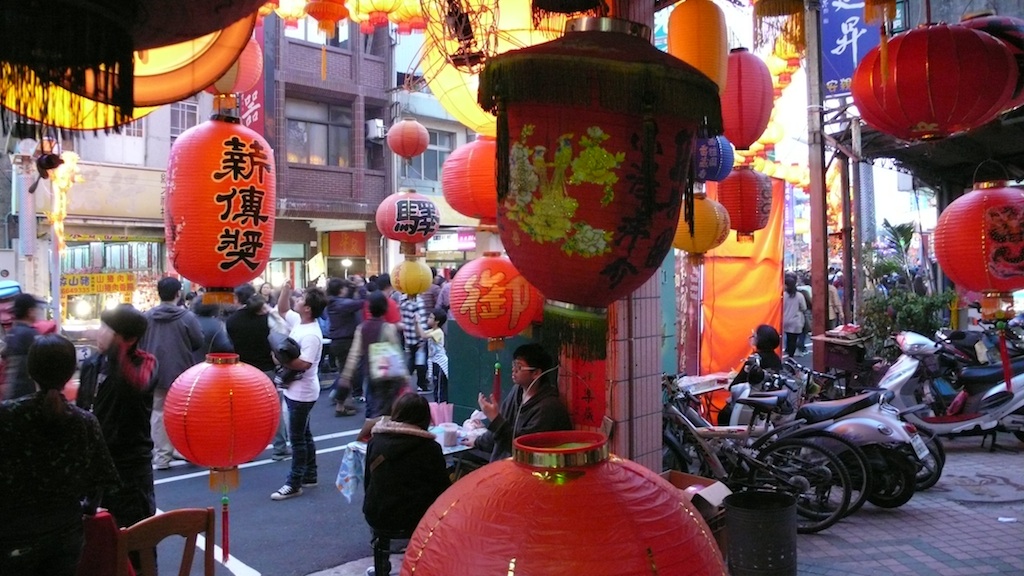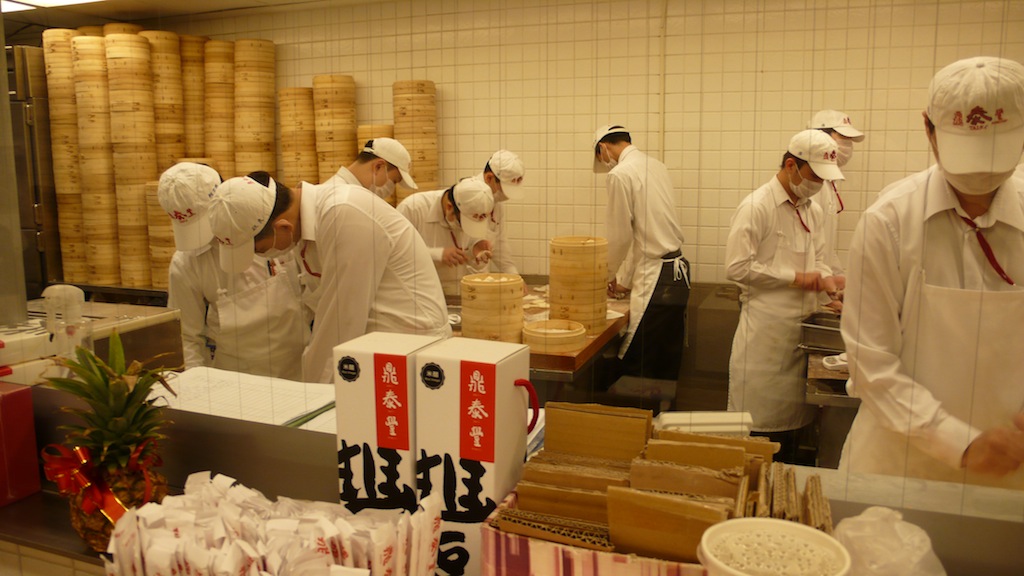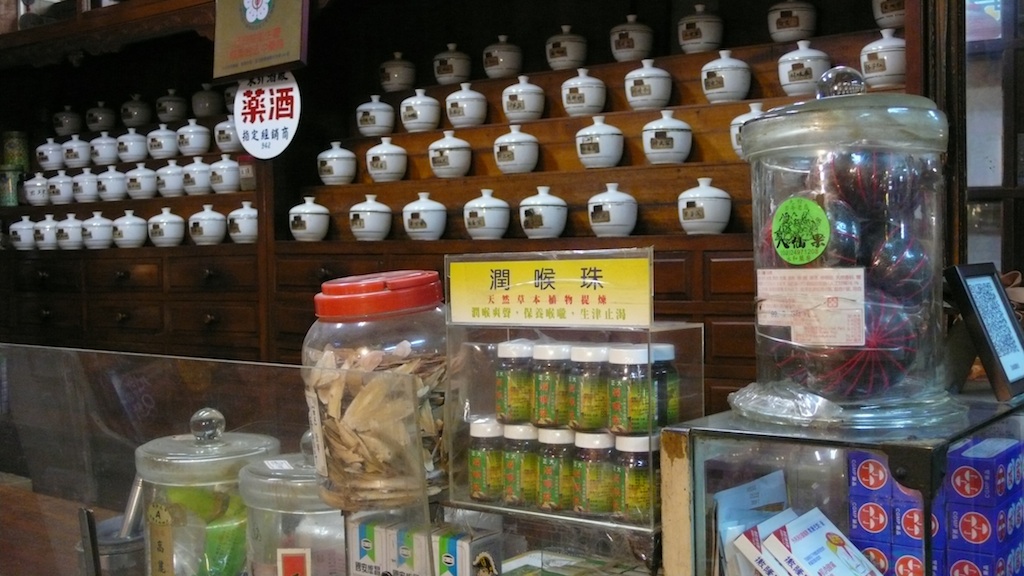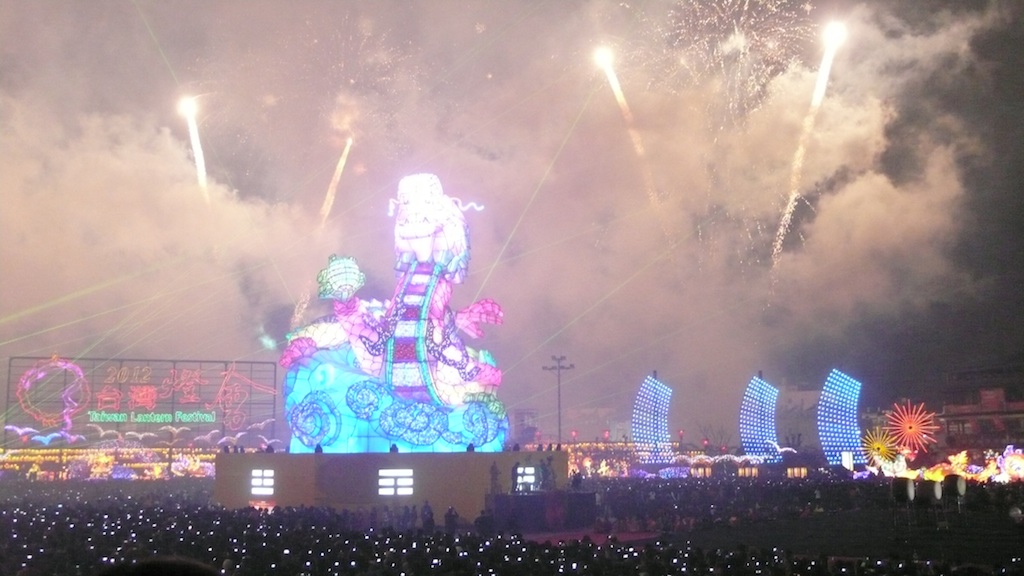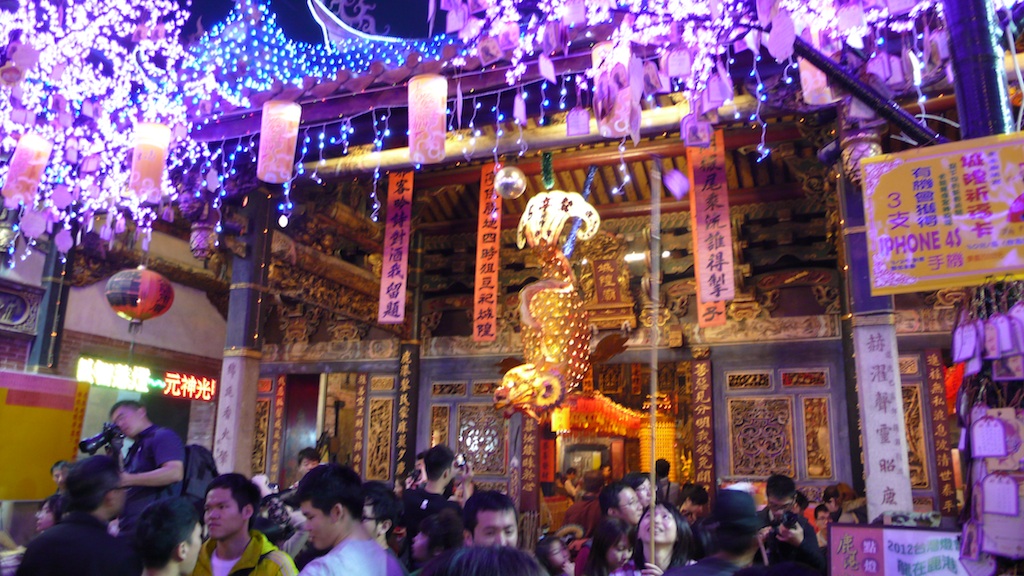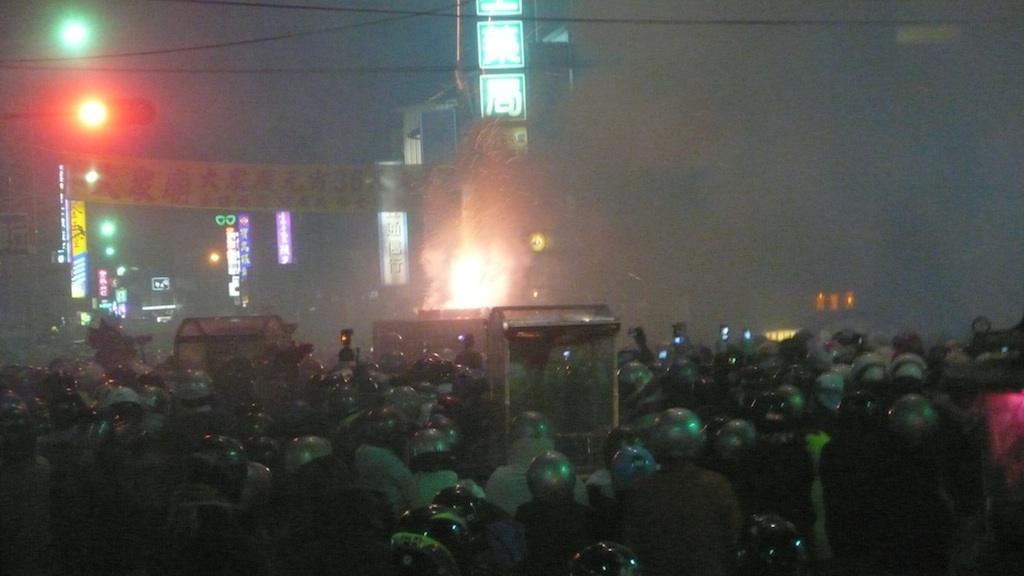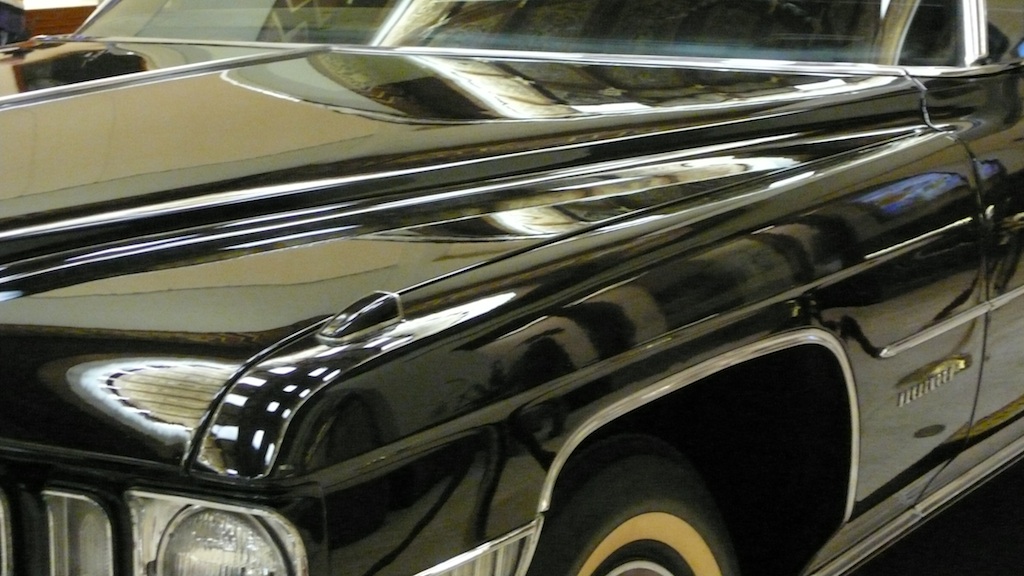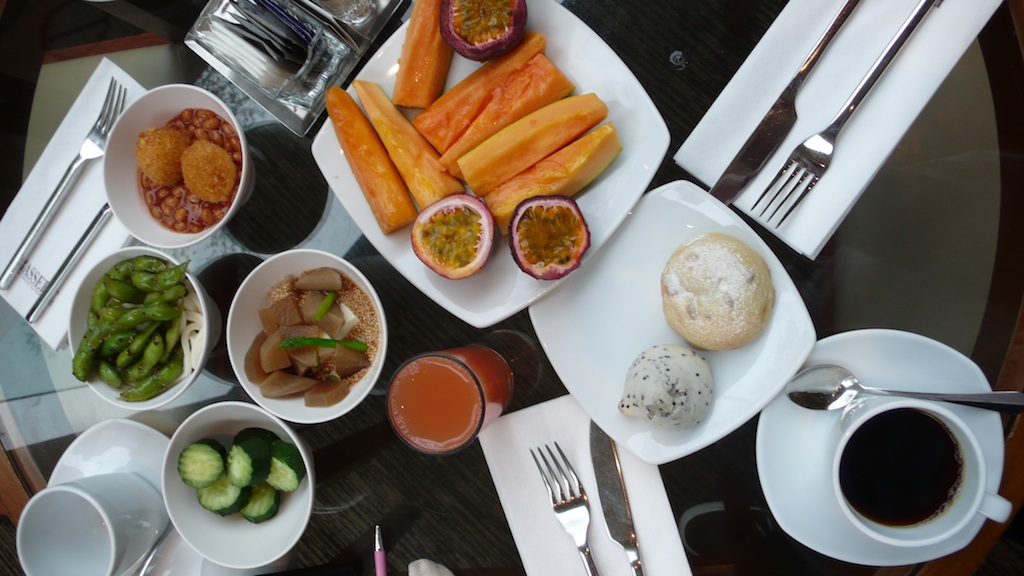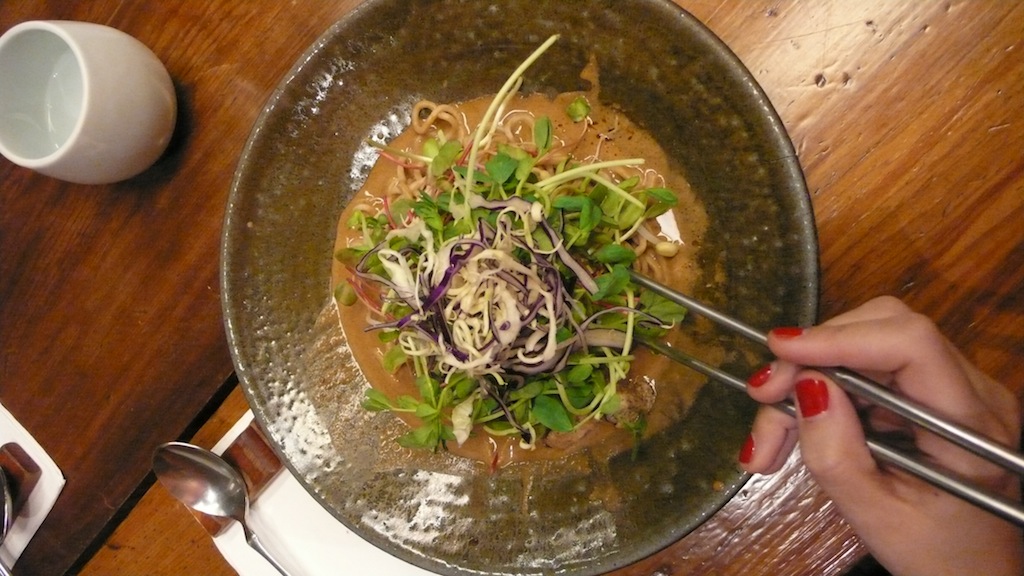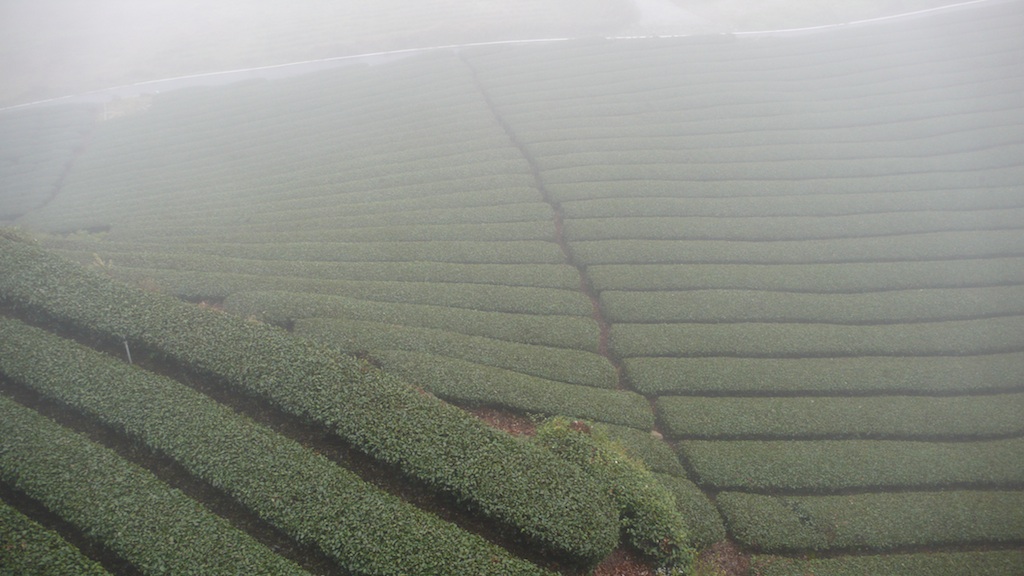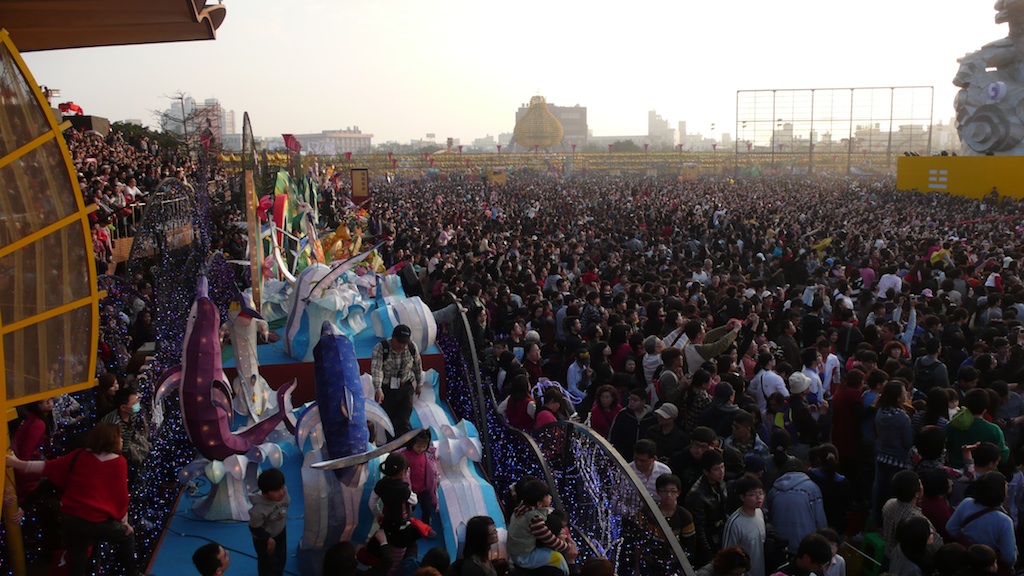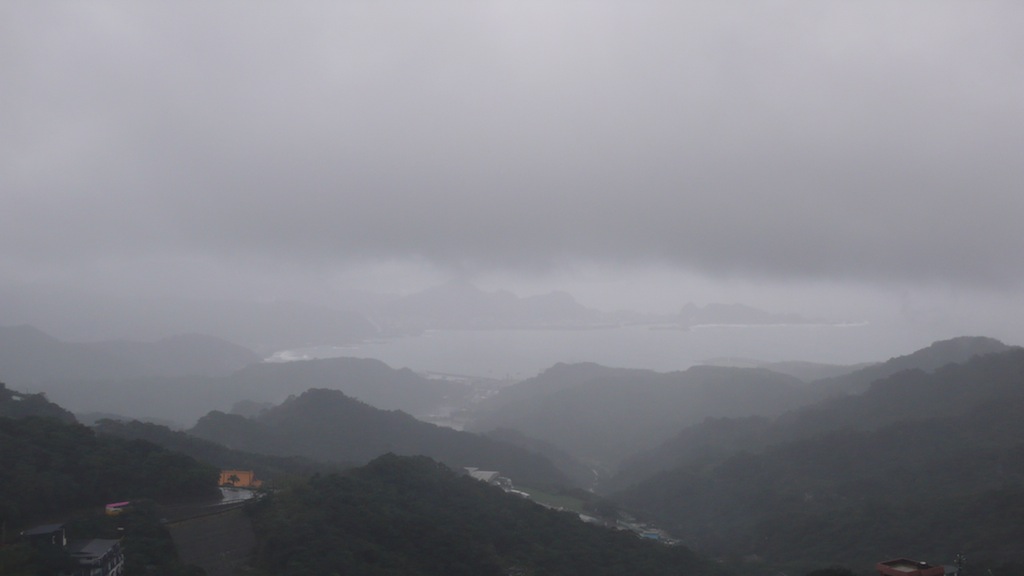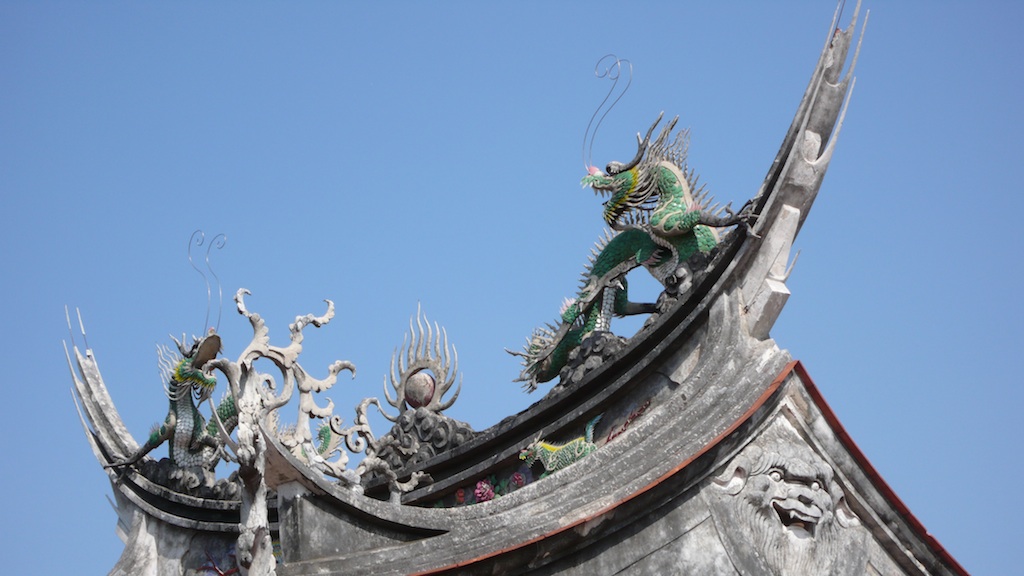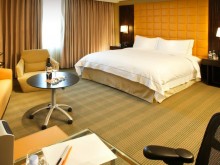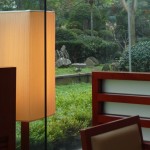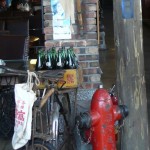Or as the ancient Chinese proverb has it, “Don’t listen to what they say. Go see.”
Seeing is believing, as the Portuguese explorers determined in 1544 – and their first sighting of Taiwan caused them to re-christen the island “Formosa” for “beautiful island.” A tropical paradise with its own indigenous culture and cuisine, Taiwan, much like Hawaii, retains a special place in the heart of those who visit.
Centrally located in East Asia, less than 75 miles off the eastern coast of mainland China, Taiwan (also known as Republic of China, which is not to be confused with mainland People’s Republic of China) attracted more than six million visitors in 2011 (an increase of more than 100% over the past decade).
One of Asia’s most progressive countries for LGBT rights, Taiwan has enacted legislation that prohibits discrimination against LGBT people in education or in the workplace, and, since 2011, the nation’s school textbooks have included LGBT topics. With more than 30,000 attendees, Taiwan’s Pride Parade in Taipei is the largest LGBT event in Asia. Kaohsiung, Taiwan’s second largest city, also hosts a pride parade. And then, of course, there’s Ang Lee, the Taiwanese director of such gay-themed films as “Brokeback Mountain,” “The Wedding Banquet,” and “Taking Woodstock.”
A country with the world’s tallest building from 2004-2010 (Taipei 101), Taiwan is home to five cities of more than two million residents each, whose citizens are increasingly accustomed to the sleek, glass towers rising seventy and eighty stories into the clouds. One of the Four Asian Tigers (along with Hong Kong, Singapore, and South Korea) – or Dragons, as some of the locals prefer, given the legendary dragon’s more propitious associations – Taiwan is one of the world’s most advanced, high-income economies. And in keeping with Taiwan’s rapid urbanization, it’s fitting that Chinese architect, Wang Shu, was this year’s winner of architecture’s most prestigious award, the Pritzker Architecture Prize, which marks the first time since the award’s inception in 1979 that the award has been given to a Chinese citizen.
One part “Blade Runner” and another part “Hello Kitty,” Taiwan’s urban nightscape is a mesmerizing reminder of the accelerated pace of technological change. Massive cable-stayed bridges dot the horizon, illuminating the Taiwanese night with resplendent light displays in purple, fuchsia, and blue. 24-hour stores sell bubble teas and consumer electronics while LED billboards scale the sides of 50-story buildings in urban landscapes where 50-story buildings are rapidly the norm rather than the exception. High-speed trains race from city to city at speeds above 180 mph – and Taiwan’s sleek new airports are a reminder that aviation is the future and the future is now.
Born of a collision between the Eurasian tectonic plate and the Philippine Sea Plate, Taiwan is the world’s fourth-highest island. Rugged mountains on the eastern coast give way to plains to the west, which is home to the majority of the island’s population. The island’s towering mountains and dramatic coastlines are bisected by the Tropic of Cancer, resulting in a profusion of sub-tropical vegetation, ferns, for example. More than 700 varieties of ferns flourish on the island of Taiwan – versus 200 in all of Europe.
Taiwan’s tropical climate and its topography of seacoast, mountains, plains, and fertile valleys promote a specialty agricultural industry that befits the breadth and complexity of Taiwanese cuisine. Colonialist culinary influences from the Dutch, Portuguese, and Japanese mix with indigenous Chinese and aboriginal traditions to create a gastronomy that is sui generis to Taiwan.
Eating your way through Taiwan is an excellent means of appreciating Taiwan’s myriad charms. A first-time visitor to Taiwan will be immediately drawn to the numerous night markets that exist in every city throughout Taiwan – and one way to prepare one’s nose (and stomach) for the onslaught of “stinky tofu” is to imagine a wheel of Camembert set out in the noonday sun to ferment for three days. Toss the odiferous mass into a deep fryer and serve with kimchi – and even then, you’d have only the palest imitation of one of Taiwan’s most popular night market treats.
Breakfast in Taiwan is an immersion into Taiwanese gastronomy. Picture a buffet that includes fresh tofu, seaweed, spicy edamame, papaya, pineapple, croissants and rice congee, dried fruits and nuts, pickled vegetables, taro, guava, passion fruit, broiled tomatoes and fried potatoes, sesame seed mochi, miso, watermelon, skinless pepper, sweet potato, peanuts, pickled gourd, blue cherry jam, pineapple and black tea marmalade – and yellow tomato juice and strong coffee to wash it all down.
After a meal like that, you’ll probably want to rest up – for the night markets, where you might partake of water spinach with garlic, ox tongue cake, mungbean cake, dragon-eye cake, deep-fried glutinous rice balls, phoenix-eye cake, oyster omelet, pig head rice, carambola juice, sweetened peanut soup, sweet beans, and jelly fig.
And if, at dawn, you’re still walking the city, walking off your gustatory sins and still seeking to placate a wayward hunger, there is the incongruity – and ubiquity – of the Taiwanese 7-Eleven. Located at nearly every second block in every Taiwanese city, 7-Eleven in Taiwan is unlike 7-Eleven in the American suburbs – and is, instead, a veritable cornucopia of comestibles so fascinating that you probably wouldn’t mind being locked in after-hours for a nightlong feast.
Our elderly friend was correct: after a day in Taiwan, your perspective and palate are forever altered – for the better. Don’t speak Mandarin or Taiwanese? Fear not, for the universal language of Taiwan is the smile – and the famed Asian hospitality is in abundance throughout Taiwan.
Since World War II, Taiwan’s economic rise has been designated the “Taiwan Miracle” – and while there’s no question that the Taiwanese people work hard, they revere hospitality as much as industry and they work to present their best to their guests – and even then, wish to do more.
This is a country where a business card is proffered with protocol: held between two hands and offered ceremoniously, with a slight bow. And this is a country with a river named Love and a lake named Lotus. Consider also a glimpsed billboard advertising “Affectionate Construction.” And consider the national slogan of the Taiwan Tourism Bureau: “Taiwan. Touch Your Heart.”
One morning at breakfast in Kaohsiung, overlooking the harbor on the 39th floor, we watched as an elderly woman took out her sketchbook and pastels. Alongside her, her husband sat silently, proudly, as the scene through the windows materialized on the page in front of them.
Oh, the industrious Chinese! To see that woman, so calmly and purposefully sketching her view of the feats and marvels of Chinese engineering, is to remain a bit in awe of a culture that has witnessed – and made so much of – human history.
Taiwan is a country in rapid transition. What you see today will, in all likelihood, be vastly different in another ten years. Our elderly friend who first visited in 1939 would be astounded at the changes. And yet, the indigenous people of Taiwan still live in the mountainous terrain, as did their ancestors from approximately 8,000 years ago – still drinking the water from the cool, clear mountain streams by using a vessel made from the elephant ear plant. Even the addition of cell phones in their pockets seems to underscore their dexterity in honoring ancient traditions in a modern world.
According to the Chinese zodiac, the Year of the Dragon is the most propitious in the 12-year cycle of animals. As the only legendary animal, the dragon represents good fortune and great power. At the opening night of the 23rd annual Taiwan Lantern Festival, this year held in Lukang, a 65-foot silver dragon was illuminated with more than one million LED lights as fireworks exploded in the sky.
The resplendent spectacle was accompanied by a propulsive soundtrack and a song whose lyrics proclaimed, “Taiwan. Formosa. The heart of Asia. The time for Taiwan is now. Taiwan opens its heart to you.” Regardless of the lyrics’ profundity, in the ensuing jubilation, no other words would have been closer to the truth.
WHAT TO SEE / WHAT TO DO:
Taiwan Lantern Festival: Imagine a mash-up of Mardi Gras, Cirque de Soleil, and Oktoberfest with more than 6 million tourists descending upon a small Taiwanese town of 80,000 – and you have an approximation of Taiwan Lantern Festival.
Designated “one of the best festivals in the world” by Discovery Channel, the two-week-long Lantern Festival (also known as “Little Chinese New Year”) marks the finale of the Lunar New Year celebrations. Each year, the festival creates a massive lantern based on the Chinese zodiac animal of the year. For 2012’s Year of the Dragon, a beneficent silver dragon on a sea of clouds towered above the crowds.
Apart from thousands upon thousands of huge illuminated lanterns of every imaginable animal and animated cartoon, the feel-good festival also includes Las Vegas spectacles starring Taiwanese pop stars, as well as Disneyesque parades – and a series of labyrinthine night markets showcasing the best of Taiwanese culinary treats.
Sensory overload at its best, the Taiwan Lantern Festival is equivalent to wandering aimlessly and happily through Peter Pan’s Neverland.
LINK: Taiwan Lantern Festival
Yanshui Beehive Rockets Festival: Way back in 1875, during the Qing Dynasty, cholera plagued the city of Yanchui in southern Taiwan – and after watching the disease wreak such havoc, the city’s fathers decided to take matters into their own hands – with firecrackers.
One of the oldest local folk festivals in Taiwan, Yanshui Beehive Rockets Festival has been celebrated for 180 years. Locals carry palanquins with statues of Guangong into busy intersections – and then proceed to launch a cacophony of beehive rockets (aka bottle rockets). Thrill-seeking tourists from around the world clog the city’s streets, dressed in helmets, gloves, and fire gear, as they shout and cheer and stomp their feet to the explosions rocketing all around them while fireworks explode in the sky.
Not for the faint of heart, Yanshui Beehive Rockets Festival takes place on the 14th and 15th day of the lunar New Year. During the two-day festival, more than a million firecrackers are set off, insuring scores of injuries and visceral thrills.
LINK: Yanshui Beehive Rockets Festival
National Palace Museum: You haven’t seen jade until you’ve been to the National Palace Museum. The national museum of the Republic of China, the National Palace Museum is Taiwan’s equivalent to the National Gallery of Art in D.C.
First established in 1925 (in Beijing) as part of the Chinese imperial collection, the National Palace Museum building in Taipei opened in 1965, whereupon the building underwent repeated renovations. A ten-year renovation was completed in 2006.
With more than 650,000 art objects, the National Palace Museum houses the world’s largest collection of Chinese art treasures, spanning 8,000 years of Chinese history from the Neolithic age to the Qing Dynasty. Collections are rotated every three months, featuring as many as 60,000 artifacts in a year. With only 1% of the collection exhibited at any given time, you can return again and again to the National Palace Museum.
LINK: National Palace Museum
Chiang Kai-Shek Memorial Hall: As large as the statue of Abe at the Lincoln Memorial in D.C., the statue of the former Taiwanese president, Chiang Kai-Shek, is an imposing piece of bronze sculpture atop 89 white steps in the midst of a vast plaza surrounded by a park.
Built in 1980, the memorial houses a library and a museum, which feature such artifacts as Chiang Kai-Shek’s black velvet mantle and his two black Cadillac limousines, circa 1955 and 1972. (Used only once, the latter vehicle is pristine.) A national historic site since 2007, Chiang Kai-Shek Memorial Hall is where Taiwanese school children learn their political history.
LINK: Chiang Kai-Shek Memorial Hall
Jiaoxi Hot Spring Park Forest Bath: All across Taiwan, hot springs dot the landscape, beckoning to a populace well accustomed to physical well-being.
Nestled in its original forest landscape, the 12-acre Jiaoxi Hot Spring Park is a secluded hot spring in Yilan with a focus on local scenery and culture. Calla lilies bloom in the terraced fields where spring vegetables grow. Dotted with flowering shrubs and trees, the bucolic setting recalls a local village in the country, far from the noise of the city.
Pools are built into the natural landscape and connected by wooden pavilions. The mildly alkaline, sodium bicarbonate waters average 122 degrees Fahrenheit – without any noxious odor.
Along one wall is a 42-foot fresco that symbolizes Turtle Island where goddesses gather to harmonize in happiness. Your body submerged in hot water, your skin baby soft, you’ll understand completely the desire to sing for joy.
LINK: Jiaoxi Hot Spring Park Forest Bath
Lotus Lake: A man-made lake as famous for its temples as for the eponymous lotus plants, Lotus Lake is the location for the Dragon and Tiger Pagodas, which are two of the most photographed towers in all of Taiwan. You enter through the dragon’s mouth and exit from the tiger’s (which is reputed to turn bad luck into good) – and it’s nearly impossible not to stop and request a photo as you exit from the jaws of a giant feline. Climb to the top of the pagodas, camera in tow – and succumb to the temptation to photograph everything in sight.
LINK: Lotus Lake
Alishan National Scenic Area: It’s a long and tortuous journey up the mountain – and particularly for those subject to carsickness – but once up amongst the clouds, it’s likely that all signs of vertigo will pass, for the beauty is simply staggering. A verdant forest loaded with cypress and cherry trees, Alishan is where the first cherry blossoms of the season appear.
Famous for its “Sea of Clouds,” Alishan National Scenic Area is also the locale of one of only three alpine railroads in the world. The Alishan Forest Railroad climbs to nearly 8,000 feet above sea level, making its way through a series of zigzags and spirals, 50 tunnels, and nearly 80 bridges, before arriving at its mountaintop destination. The Mount Zhu rail station is the highest in Taiwan – and this is where you head to witness the sun rising through the sea of clouds, one of Taiwan’s more splendid sights.
LINK: Alishan National Scenic Area
Mandara Massage: Massage in Taiwan is as integral to the local culture as stress is in the United States. To avail yourself of a good massage while in Taiwan is certain to remind you of the power of letting go and sinking into a blissful state.
Located at the five-star Tempus Hotel in Taichung, Mandara Massage features first-class masseurs who practice massage with the skill of Glenn Gould on a Steinway.
In Balinese folklore, “mandara” is the mythical mountain that flows with eternal youth – and after a massage at Mandara Massage, it’s likely that you’ll feel younger than springtime.
LINK: Mandara Massage
WHERE TO STAY:
The Regent Taipei: Whenever Patsy and Edina leave “Ab Fab” London and head for Taiwan, they head to the Regent Taipei. No other hotel in Taipei is better situated for shopping – and grand entrances. The hotel’s massive circular drive and porte-cochere are perfect for gliding out of a black limousine, shopping bags in tow. Best of all, the Regent Galleria within the hotel contains more than 50 of the world’s most prestigious boutiques, including Harry Winston, Hermes, Cartier, and Bulgari. What fashionista wouldn’t feel immediately at home upon crossing the threshold of the Regent Taipei?
Opened in 1990, the Regent Taipei became a member of the largest group of luxury hotels and resorts in the world when the Regent Hotels group merged with Four Seasons in 1992. A world-class luxury hotel (and named one of the “World’s Best Places to Stay” by Condé Nast Traveler), the Regent Taipei prides itself on faultless service and five-star service – and every employee seems a paragon of Asian hospitality.
Guest rooms and suites at the Regent Taipei are the most spacious in the city. Deluxe rooms measure approximately 500 square feet and include floor-to-ceiling windows and a gracious lounge area. The overall atmosphere of the guest rooms and suites is that of an impeccably furnished home fusing the best of ultra-modern design with traditional materials. Marble bathrooms include a deep soaking tub, separate shower, and enclosed water closet (with telephone). Beds are covered with a feather duvet, while high-speed WiFi and three telephones insure that you are able to crow to your friends stateside about the luxury of your surroundings.
The hotel is perfectly situated in the heart of Taipei’s shopping and cultural center, though it’s tempting never to leave the premises. A rooftop swimming pool provides stunning city views, while a series of saunas, steam rooms, Jacuzzi, and cold plunge pools provide relaxation in the hotel’s health club.
As for dining, the Regent Taipei has seven restaurants, including the 350-seat Brasserie where breakfast is served every morning. Breakfast at the Regent Taipei is not to be missed; breakfast at the Regent Taipei is the ne plus ultra of that morning meal. Breakfast at the Regent Taipei is what you will pine for once you have returned home – and here’s why: an international buffet that rivals any served on a five-star cruise ship. With a surfeit of Eastern delicacies and Western specialties, including papaya, passion fruit, black sesame seed mochi, miso, and more, this is the kind of breakfast that gets you out of bed in the morning and makes you happy to be alive.
And what could be better than to find yourself seated at the Brasserie, overlooking the hotel’s vest-pocket park and sipping fresh coffee while contemplating another day’s pleasures at the Regent Taipei? That’s one definition of heaven, no question.
LINK: The Regent Taipei
Hotel One: Were Austin Powers to arrive in Taichung, the Hotel One is where he’d stay – along with the Hollywood producers and executives filming Mr. Powers. A harmonious blend of contemporary design and multi-tasking functionality, Hotel One is the embodiment of modern life.
Located in a stunning ovoid glass tower that rises out of the Taichung grid, Hotel One evokes the monolith from “2001: A Space Odyssey.” The tallest hotel in Taichung, Hotel One was recently a Trip Advisor winner for “Trendiest Hotel.” For those wary of the word “trendy,” fear not, for Hotel One has enough substance and foundation to weather fickle design movements.
Opened in 2007, Hotel One has more than 200 guest rooms and suites on the 24th through 46th floors. Book a corner room for jaw-dropping vistas. Sink back into your king-sized bed and push the buttons for the electric curtains – and watch in awe as the sky opens up around you. The capacious rooms are furnished in an amalgam of Eastern and Western design and all are equipped with a generously-sized workstation with 37-inch LCD TV, DVD player, laser printer, iPod connector – and 5.1 Surround sound system. There’s also free Wireless Internet access and a 24-hour health center. In short, this is the hotel into which you check in – and check out – while you polish up that screenplay that has Oscar written all over it.
Soak in the tub overlooking the Taichung skyline – or shower in the walk-in rain forest shower with full-length window. Go ahead and grind against the glass; from way up here, only the angels can see you dancing.
Breakfast is served amongst the clouds on the 28th floor at IN Restaurant, a contemporary brasserie where the extensive buffet includes an array of Western dishes, alongside Chinese, Indian, Thai, and Japanese specialties, all prepared with seasonal, local ingredients.
Downstairs, a bakery named Liz serves fresh-baked breads, cookies, and pastries in the lobby where it’s pleasant to watch office workers hurrying to and fro. Before long, however, you’ll probably pine for the giant windows and the unparalleled views from your room. Head back upstairs to your playboy aerie – and sink into your penthouse fantasies. Go ahead, admit it: you’re “King of the World.”
LINK: Hotel One
The Splendor Kaohsiung: At the time of its completion in 1994, the 85-story Sky Tower was the tallest building in Taiwan – and the eighth tallest in the world. The tower’s shape evokes the Chinese character meaning “high” or “tall” and can be seen from all over Kaohsiung Harbor, the third largest port in Asia, as a symbol of Kaohsiung’s import as a shipping center. High-speed elevators are the third fastest in the world as they send guests skyward to the View Deck on the 74th floor.
Located at the Sky Tower’s center, from the 46th through the 70th floors, the Splendor Hotel has nearly 600 guest rooms with breathtaking vistas of the sea, sky, and city. “Come walk in the clouds” is the Splendor’s tag line – and they’re not kidding. Atop Sky Tower is the Palace Club, the highest health club in the world. Guest rooms are equipped with high-speed Internet – but this is one of those hotels where the actual windows trump the windows on your computer screen. At night, the city of Kaohsiung glitters with as much light and neon as Los Angeles and Las Vegas.
Breakfast is served at the Brasserie on the 39th floor – and its claim as “the biggest buffet in Taiwan” would be hard to refute. Western, Japanese, and Chinese options are available on the expansive buffets that fill two entire rooms. There’s also a separate fruit buffet – and another reserved for baked goods and pastries.
Deluxe rooms are capacious, measuring 430 square feet – and include bedside light controls and a marble-floored bathroom with water closet, walk-in shower, and soaking tub. The decor is an amalgam of clean Asian design and classic Danish contemporary, which evokes the home of a well-heeled corporate executive and his stylish partner. The entire setting is perfect for sipping a dry martini before heading to dinner at one of Sky Tower’s cloud-splitting restaurants.
Live tall; live high; live splendidly amongst the clouds at the Splendor.
LINK: The Splendor Kaohsiung
Promised Land Resort & Lagoon: If you’ve ever wanted to vacation in an ersatz European resort in the middle of an Asian isle, then Promised Land Resort & Lagoon is your ticket to paradise. Imagine a Disneyfied Mediterranean lagoon with Spanish Revival architecture and plaster statuary of Roman demigods and goddesses as well as a Venetian gondola – and you might want to sink to your knees.
Some Taiwanese couples come to Promised Land to propose, marry, or honeymoon. Many families frolic on the walkways and head to Wayne Ranch for horseback riding – because the family that rides together stays together. Dining options include a massive buffet that would make aficionados of Vegas feel right at home. As the brochure promises, “Everlasting vacation fun” at Promised Land Resort & Lagoon.
LINK: Promised Land Resort & Lagoon
WHERE TO EAT:
Old Taiwan: Imagine a collector of Asian film memorabilia who marries an aficionado of Forties culture and together they open a restaurant in a warehouse filled with military detritus and vintage toys – and you might have a general idea of the atmosphere of Old Taiwan in Kaohsiung.
As soon as you step inside Old Taiwan, you feel as if you’re Alice sliding down the rabbit hole – only to land on the other side of the earth inside a Chinese emporium. Every nook and cranny of this well-designed restaurant evokes a bygone era, all of which complements the timeless comfort food served at the booths and tables.
Taiwanese favorites are served family-style, while grainy black-and-white films play in the background on wall-sized movie screens. Best of all, the food is even more delicious than the atmosphere – and it’s tempting to think about eating here for two – or three – meals in a row.
Old Taiwan serves as a reminder that sometimes old is the best.
LINK: Old Taiwan
Gulu Gulu Aboriginal Music Restaurant: Opened in 2004 by the gifted Paiwanese singer, Chiu Jin-Ming, Gulu Gulu offers traditional Paiwan dishes in a setting that is as bohemian as a local eatery on Maui or a coffeehouse in Berkeley, California. The decor features driftwood sculptures and brightly-colored murals, as well as painted stones – and the vibe is as relaxing as a surf shack on the ocean.
A small stage on the first floor provides space for impromptu performances by the velvet-voiced Chiu whose warm and ingratiating manner serves as a perfect complement to his aboriginal comfort food.
Meals commence with a small glass of millet wine to prime the palate for a parade of beautifully-plated courses that are as stimulating as they are toothsome and tasty. “Ah vai,” a mixture of millet and vegetables arrives steamed in leaves and wrapped in twine, before releasing a heavenly fragrance above the table.
There’s an easy elegance about Gulu Gulu, which affords a renewed respect for aboriginal customs that celebrate the gifts of Mother Earth. By evening’s end, you might find yourself onstage playing the bongos while Chiu serenades the room with his soulful songs.
LINK: Gulu Gulu Aboriginal Music Restaurant
Din Tai Fung: Named one of the world’s top ten restaurants by the New York Times in 1993, the original Din Tai Fung has expanded to more than fifty locations in ten countries around the world – with the outposts in Hong Kong the recipients of Michelin stars.
Opened in 1958 as a small cooking oil retail shop, the Taiwanese storefront became a restaurant in 1974 known for its xiao long bao (small steamed dumplings) – and thus initiated its evolution into a worldwide phenomenon.
The staff is comely and efficient, the atmosphere convivial, and the food at Din Tai Fung is clean and delicious. It’s no wonder that food critics, celebrities, tourists, and locals still flock to this Taiwanese landmark.
Be sure and watch (and photograph) the squadron of chefs in the kitchen as they pound, knead, wrap, fold, and steam the dozens of dumplings that you ingest.
To eat at Din Tai Fung is to understand how Taiwan became one of the Four Asian Tigers.
LINK: Din Tai Fung
Du Hsiao Yueh: For more than a hundred years, this landmark Tainan restaurant, famous throughout Taiwan for its succulent tan tsi noodles (minced pork with shallots, shrimp soup, and oil noodles), has been feeding a fanatical following of happy eaters.
With a new branch of the restaurant in Taipei, the famous family recipe can now be enjoyed without having to head south. According to restaurant history, the record for the most bowls of tan tsi noodles consumed in one sitting is eighteen. One taste and you might be tempted to see if you can break the record.
LINK: Du Hsiao Yueh
Caffé Forte: A taste of Prague in the midst of Taichung, this literary and music café is owned and managed by Taiwan’s foremost enthusiast of Czech musical culture, Kao Sung-Ming. Located a few steps from the bucolic Art Museum Parkway, Caffé Forte evokes the cafes of Western Europe, albeit with a decided dose of Taiwanese hospitality. Sip coffee in a leather chair while listening to Dvorak’s “Symphony for the New World” – and reflect upon the fact that Asia and Europe have always been neighbors.
LINK: Caffé Forte
WHERE TO SHOP:
Cameza Plus: Located in the Zhongxin Marketplace (which is, in itself, a fascinating historic structure that retains a taste of old Taiwan amidst a burgeoning contemporary art scene), this exhibition space features antique cameras and furniture – and every sort of curio associated with a passion for photography and film.
LINK: Cameza Plus
GETTING THERE:
Virgin America: How much fun is it to hear Sinatra sing “Come Fly with Me” as the sun sets over an ocean of clouds as you wing your way westward on Virgin America?
As soon as you enter the Virgin America cabin, you realize you’re flying in a whole new realm. Crossing the portal into the plane is analogous to entering a private lounge. Mauve lighting is seductively low and by the time you sink into the black leather seats (white leather if you’re in first class), you’re feeling as if you’re a member of the travel cognoscenti.
It’s also interesting to note that nearly everyone flying Virgin America seems to look better than patrons of other airlines: more attention to attire, for example, and less “I just spent three days in a mud hut eating roadkill before I boarded the plane.”
On-demand food, beverage, and entertainment enable you to create a kind of bespoke flying experience: one that’s tailored to your specific desires. And if you squint, you can almost believe that you’re back in the golden age of commercial aviation: Is that a Pan Am purser? Champagne? Why, yes, I will.
LINK: Virgin America
China Airlines: There’s no getting around it, flying to Taiwan from the US is arduous: approximately fifteen hours from Los Angeles to Taipei. The upside is that the return flight to the US shears off four hours, thanks to tailwinds.
So, what to with all those hours? Fortunately, China Airlines’ new long-haul Economy Class cabins feature ergonomic seats that recline. Take a Klonopin and sleep. Or catch up on Taiwanese film director Ang Lee’s oeuvre on the in-flight entertainment system. The 9-inch LCD touch-screen monitor features a wide array of entertainment choices, including atmospheric music to remind you that you’re flying through the clouds. And on a flight like this, few things are more appreciated than the calmness and hospitality often associated with the Chinese people. Practice your deep breathing.
LINK: China Airlines
ADDITIONAL INFO:
Click here for MRNY gallery of Taiwan.
Taiwan Tourism Bureau: Click here for Taiwan Tourism Bureau
Discovery Channel documentary: Click here for Discovery Channel documentary on Taiwan
Island Etude: Click here for video
23rd Taiwan Lantern Festival in Lukang, Taiwan: Click here for Lantern Festival video

